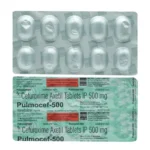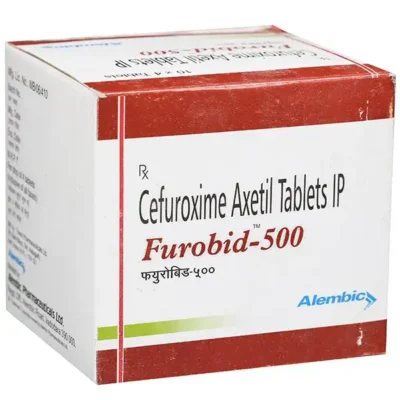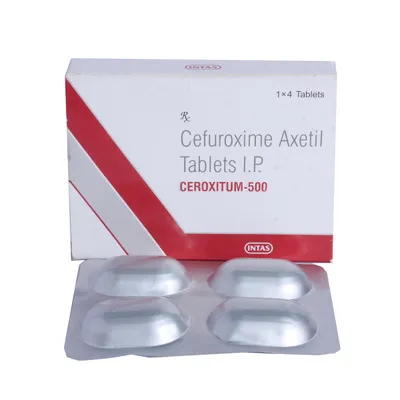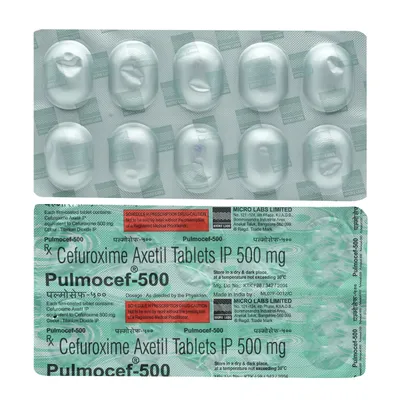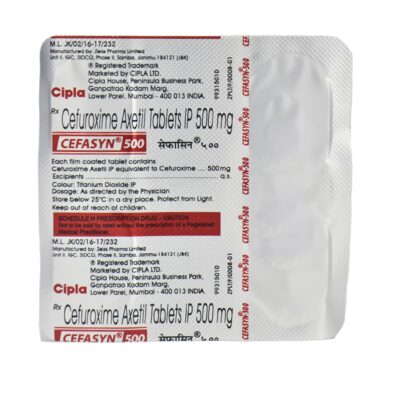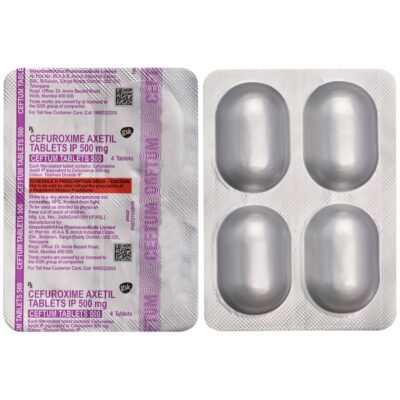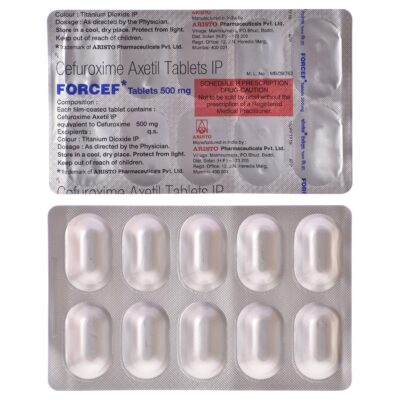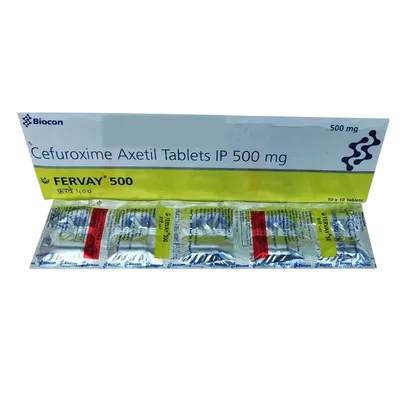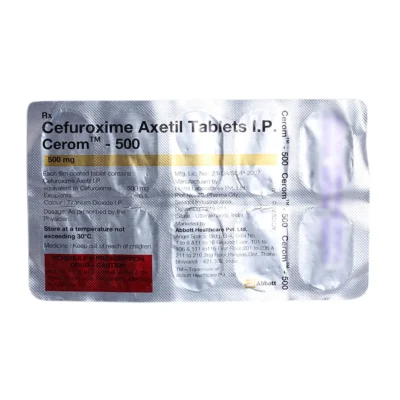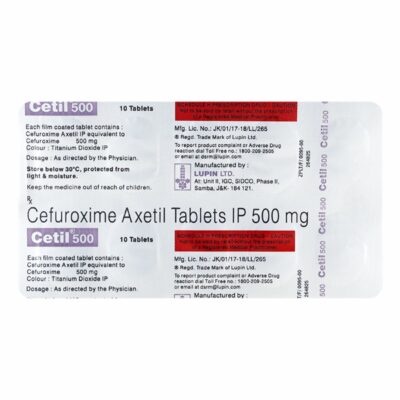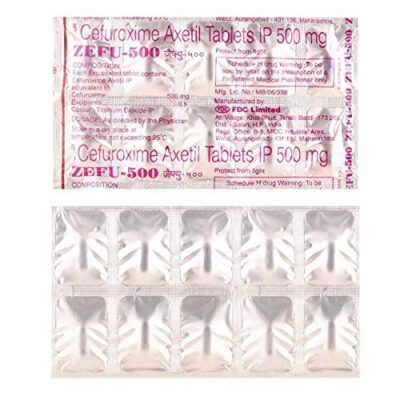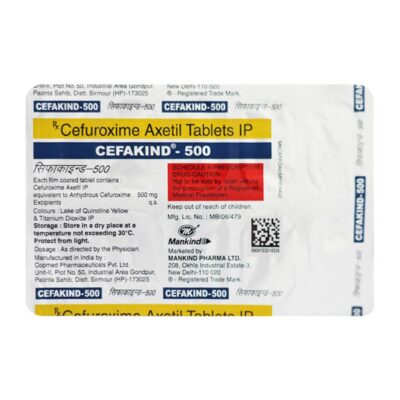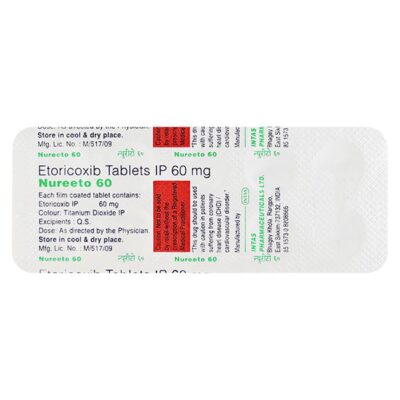Description
🧬💊 Cefuroxime 500mg Tablet: A Complete Clinical Guide
Cefuroxime 500mg is a higher-strength, second-generation cephalosporin antibiotic used to treat moderate to severe bacterial infections. It is particularly effective against a broad range of gram-positive and gram-negative bacteria, making it a preferred choice in many clinical settings. It acts by disrupting bacterial cell wall synthesis, leading to bacterial death.
🔍 Mechanism of Action
Cefuroxime belongs to the beta-lactam class of antibiotics. It binds to penicillin-binding proteins (PBPs) in the bacterial cell wall, preventing the formation of peptidoglycan cross-links—an essential structural component. This weakens the wall and causes bacterial lysis and death, making Cefuroxime bactericidal in nature.
📌 Indications
Cefuroxime 500mg is often prescribed for infections that are more severe or widespread. Its uses include:
-
Lower respiratory tract infections: Such as community-acquired pneumonia and acute bronchitis.
-
Upper respiratory tract infections: Including sinusitis, pharyngitis, and tonsillitis.
-
Urinary tract infections (UTIs): Such as cystitis and pyelonephritis.
-
Skin and soft tissue infections: Including cellulitis and infected wounds.
-
Sexually transmitted infections: Like uncomplicated gonorrhea.
-
Lyme disease (early stage): As an alternative to doxycycline in some cases.
Its effectiveness against organisms like Haemophilus influenzae, Streptococcus pneumoniae, Moraxella catarrhalis, Escherichia coli, and Neisseria gonorrhoeae makes it widely applicable.
💊 Dosage & Administration
-
Standard adult dosage: 500mg twice daily, every 12 hours.
-
Should be taken after food to improve absorption.
-
Duration of therapy varies based on the infection—usually 5 to 10 days, though longer may be needed for conditions like Lyme disease.
🚫 Do not skip doses or stop early—even if symptoms improve—to prevent antibiotic resistance or recurrence.
⚠️ Precautions & Warnings
-
Allergic reactions: Not suitable for patients allergic to cephalosporins or penicillins.
-
Renal impairment: Dose adjustment may be necessary in patients with kidney problems.
-
Pregnancy & breastfeeding: Considered relatively safe, but always consult a healthcare provider.
-
History of gastrointestinal disease: Use cautiously in patients with colitis or similar conditions.
⚠️ Side Effects
Most side effects are mild and transient. Common ones include:
-
Diarrhea
-
Nausea
-
Abdominal discomfort
-
Headache
Serious but rare effects:
-
Hypersensitivity reactions (rash, itching, swelling)
-
Anaphylaxis (rare but life-threatening)
-
Clostridioides difficile-associated diarrhea
-
Liver function abnormalities
-
Blood disorders (leukopenia, thrombocytopenia)
Seek medical attention for persistent diarrhea, yellowing of the skin or eyes, or signs of an allergic reaction.
🔄 Drug Interactions
-
May decrease the effectiveness of oral contraceptives—use additional birth control methods.
-
Interaction with antacids or H2 blockers (e.g., ranitidine) can reduce Cefuroxime absorption—space doses if necessary.
-
Can interact with warfarin, increasing bleeding risk.
🧊 Storage
-
Store at room temperature (15°C–30°C).
-
Protect from moisture and light.
-
Keep out of reach of children.
-
Do not use after the expiry date.
📝 Conclusion
Cefuroxime 500mg is a robust and versatile antibiotic, especially effective for treating more serious bacterial infections. With proper usage, it is well-tolerated and highly effective. However, as with all antibiotics, misuse can lead to resistance, so it should be used only under medical supervision. Always complete the full course and consult a doctor if symptoms persist or worsen.
🛑 Note: This information is intended for educational purposes and should not replace professional medical advice. Always consult a healthcare provider for personalized guidance.

